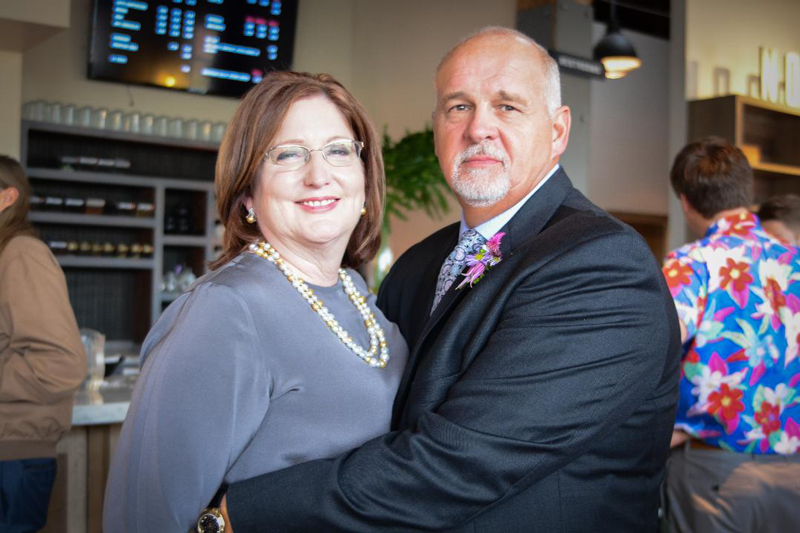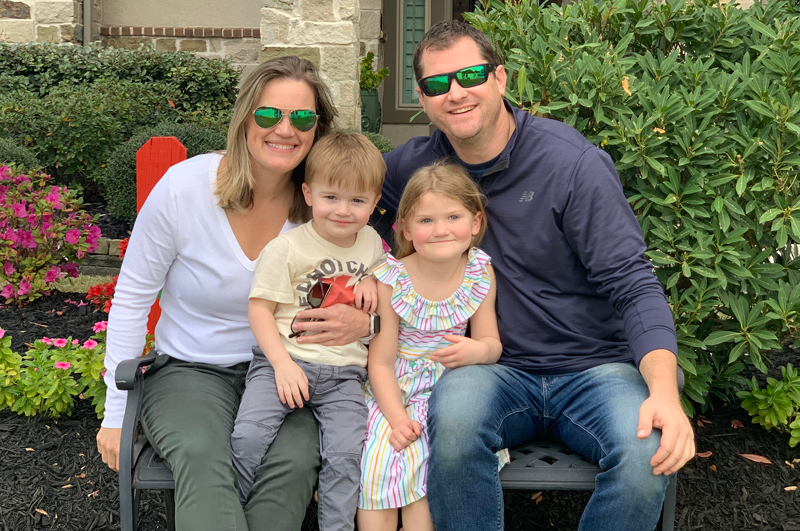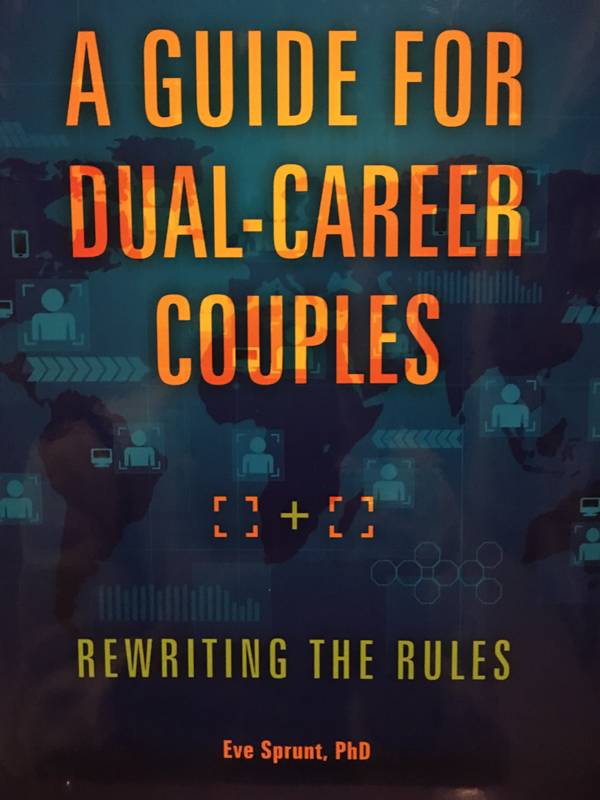Stacey Olson and her husband, John, are driving west through South Dakota in October just a few days after Stacey retired as president of Chevron’s Appalachia Mountain Business Unit in Pittsburgh. Cell phone coverage is weak, but our discussion about his experience as a male trailing spouse reveals critical success variables.
“For the first half of my career, both John and I worked at Chevron. We moved around and had multiple international assignments. When we were working in Nigeria, we decided as a couple that John would retire/resign from Chevron, because we had a lot of work dealing with our three young children (8, 10 and 12), and it was clear that my career was progressing faster than his.”

That decision enabled Stacey to work long hours in stressful jobs and relocate every three to four years. As the lead parent, John developed an amazing relationship with all three of their kids. During their international assignments, John got to know the other stay-at-home spouses, who were all intelligent, educated women.
Stacey and John met at Louisiana State University, where she earned her B.S. in petroleum engineering and John got his B.S. in business and computer engineering. In social settings, when someone asked John, “What do you do?” He’d explain, “I’m not working now.” Later John got a teaching certificate, did some substitute teaching, and in Aberdeen taught computer science full-time.
“We switched roles completely,” Stacey says. “John made all the “home” decisions and was the “PTA Mom,” and the “room Mom.” He did all the laundry and handled doctor visits. He got in a lot of golf and ran marathons. The expat guys were jealous and would say, tongue in cheek, ‘I wish I were you.’”
Being a trailing male spouse was easier in expat communities because everybody works hard to get along. John adds, “Men need to figure out that this is the best kept secret. I happily did the things ‘50s wives were supposed to do. Those were my key job responsibilities. More couples could make this decision intentionally.”
Stacey says, “John let me move around and shine. Ultimately, our net worth is so much more than it would have been if we both had worked. I’m 56 and our retirement is well-funded, because I could focus on my career. We have more money now than if we had two mediocre careers.”
Colleen Cervantes, who is now president of Chevron Lubricants, met her husband, Winston, while they were both working for CalTex in the Philippines. After a stint in the U.S. during which they both worked, they moved to Singapore with their two young daughters, four and seven. Colleen was traveling 70 percent of the time, so Winston decided, “One of us needs to be home; I’m going to do what’s best for the family.”
Six months later, Colleen told him, “The kids are fine. I’m fine, but you are miserable. Find something that fills that void in you.” So, he started training to run half-marathons and then marathons. Now he is doing iron mans. “He found something else to give him some purpose.”
When they were in Singapore about 14 years ago, there were other female American and European expats, who were the primary breadwinners; their husbands didn’t work. The trailing spouses did stuff together.
Colleen thought when they moved back to the U.S. Winston would return to work, but he said, “Why would I? I’m having the time of my life!” Now, Colleen observes, “Work didn’t fit into his schedule. I was okay because the girls had him around. He always knew where they were and what they were doing, which freed me up to be better at my job. I would never have asked him to give up his work. He realized on his own that it was the best decision for the family. He is much more nurturing than I am. He and the girls, who are now adults, have a wonderful relationship.”
The discussions with Stacey and Colleen reveal a key success variable. A man who assumes the traditional female role of managing the children and the household, while his wife works, will encounter awkward moments. The trailing spouse is psychologically better equipped to deal with the challenges if he actively made the choice to assume that role.

However, not all trailing spouses must sacrifice their career. Some men maintain their career while following their wives. Christina Sistrunk and her husband, John, are a splendid example of a dual-career couple in which the man was a trailing spouse.
I speak with Christina shortly after she retired on October 1st as the president and CEO of Aera Energy, LLC, in Bakersfield, CA, which is jointly owned by Shell and ExxonMobil and operates as a stand-alone company. She was in the middle of moving to New Orleans, although Hurricane Delta had delayed her moving van.
Early in her career, the first time Christina transferred, John was working rotations, seven days on, seven days off. The “catch” was John’s employer had a policy requiring him to live within 60 miles of his reporting location. John challenged the rule, asking, “Why do you care where I live as long as I am where I need to be when I need to be there?” If forced to choose between sticking with his wife and his job, John told them, “I’m married to her; this is just a job.” John continued working rotations as their residence bounced around wherever Christina’s career took her.
The next big hurdle for John occurred when Christina transferred to the Netherlands. John consulted his boss, who gave him three options. He switched to 21-day rotations and continued working in the Gulf of Mexico with the same team until about three years ago when, during a downturn, he elected to retire with enhanced severance.
Using WhatsApp, I chat with Mikki Corcoran, the general manager of Schlumberger Europe, who is based in Aberdeen. Even with 3,000 people in her organization, like many of us, she is working from home during the pandemic. She finds it amazingly effective and shares, “Most of our employees want a flexible way of working just to get the work/life balance right.”
Mikki loves that for the first time she has been able to greet her sons, now 10 and 14, when they come home from school. She enjoys engaging with them over tea and biscuits; inquiring about their day. “Before, I always missed that. By the time I got home at six, seven or nine, they were tired and had forgotten the details.”
Mikki, who is from the U.K., met her husband, Kaare, a Norwegian, when they were both working for Schlumberger in Norway. Before they got married, they were together in Norway for a few years. Then, while Kaare continued working in Norway, Mikki took assignments in Nigeria and Azerbaijan before securing another position in Norway.
After that, because they had similar rank and seniority, they alternated who would take the lead, especially when they had their first son. While Mikki was on maternity leave, Kaare got a good promotion as an operations manager and he was the lead. On her return, Mikki got a promotion to the same level.
Moving from Norway to Houston, they held several positions at the same level before Mikki jumped to a much bigger role. She explains, “It was a turning point for us and Schlumberger started the conversations about who had the lead career.”
“Kaare didn’t immediately realize he would not get the same opportunities. It took several years for that to sink in and was difficult for him to accept. There are still times when we have heart-to-heart discussions about whether his career would have been different if he hadn’t been my trailing spouse.”
“It has always been very important for my husband to continue working. Before every move, that has been part of the discussion. Now, he has a role that allows him to work from anywhere in the world. It is important for us as a family and our relationship that he works.”
“It would have been much more difficult if we hadn’t both worked within Schlumberger. Definitely it is hard, but over the last few years, it has gotten better. Time heals … It is about total value incorporating family, career opportunity and wealth. The turning point comes where the spouse realizes the gap is what it is and will never be closed, but as a family you’re going to achieve that total value that is so important for everyone. I know that if these career opportunities had not come for me, we would have moved back to Norway years ago.”
When Mikki says 70 percent of her reports are women, I am amazed. She explains Schlumberger is pushing for 50 percent women at the top of the company and actively putting females in the roles they deserve.
Not surprisingly, many of the women Mikki manages have trailing spouses. She empathizes with them. “Having a trailing spouse who doesn’t have a job is difficult. I see all the different scenarios. When a spouse has been released or has given up their job and can’t find one, there is a lot of stress on the family.”
As a member of a dual-career couple, Mikki empathizes with those facing difficult work/life decisions. “If we ask a female to move as the lead career and we can’t place the trailing spouse, we try to support them as much as possible. We must understand that there is a risk that you are taking two highly involved employees and making one of them completely disengaged. You don’t need to ask them who has the lead; the company knows who leads. When you get to the later stage of your career, the prize makes it more acceptable for the trailing spouse to perhaps pursue other options.”
Listening to Mikki, I realize how far the oil industry has come since I joined Mobil in the late 1970s and my boss’s boss explained to me, “You can’t have a younger woman supervising an older man.” More women are moving into high leadership positions and face the challenges of having a male trailing spouse. Christina headed an independent company, Stacey and Colleen became presidents of large business units, and Mikki leads a large region for Schlumberger.
Having trailing spouses enabled Christina, Stacey, Colleen and Mikki to rise to high levels, but life is full of surprises. Luck, timing and the right sponsors also play a big role in our careers. Now let’s hear from a couple of mid-career women.

KC Littlefield is the competitive performance manager for Chevron in Houston. Over a decade ago when KC and her future husband, another Chevron employee in information technology, decided to commit as a couple, KC’s sponsor at the time advised, “You’ll need to figure out who will be the leading spouse.” She believed the reason they were asked to specify a lead was to ensure that one of the two in the couple was prioritized for placement and growth, while the other risked a potentially less satisfying career trajectory.
When faced with the decision, they were both relatively new to Chevron and had comparable performance appraisals and assessments of potential. Their choice was driven by their assessment of whose job function appeared to have the best opportunities for advancement.
The identification of a leading partner may have been premature or not as necessary as originally thought. Despite formally identifying KC as the leading spouse, they have advanced at an equal pace. KC believes, “The expectations about who leads have diminished as over time we both built our networks and found sponsorship and visibility within the company.”
Almost four years ago, when they were both in their late 30s, they had a son. Since then they have continued to advance at Chevron. They hired a nanny to help with chores and childcare and strive to equally share responsibilities at home. As their son approaches school age, KC’s appetite for growth has revived, but she no longer feels she must define herself as the leading partner.
“It was easy to say, ‘I’m leading,’ when it was just the two of us, but now I like the idea of the partnership because I like being part of the home front, too. It’s more fulfilling as a family, and it’s the right balance for Paul and me.”
“More people know both of us, and we have more sponsorship than ten years ago when we were asked to make a declaration. I also think the company has turned a corner when it comes to placing dual-career couples.”

Carrie Goddard, who is the asset retirement program manager for Chevron in Midland, TX, says, “Mobility is highly coveted and opens up a lot more opportunities. Unless you are in Houston, you run out of options. Having a spouse who is trailing or can work from anywhere has given me the freedom to aim higher than I would otherwise.”
Carrie and her husband are both on their second marriages. When they had a baby, he didn’t want to miss out on his son’s life the way he had with his older kids, who are now in their 20s. Their son is now three, and he takes care of him, breakfast, lunch and playtime. They split housekeeping, but Carrie loves to cook and does most of that.
Contrasting her generation with the women who preceded her, Carrie observes, “There might be a key message that women who have reached the highest levels of success today were almost required to have a non-working spouse (or one with ultimate location flexibility) in order to get there. However, with my mid-career female friends who are progressing through the ranks, it appears it’s becoming a little less of a “requirement” to have a non-working spouse. My husband and I chose that path in order to be completely mobile and because of our young son, but others have been able to successfully navigate dual careers by working for the same company which would move them together or by living in a location such as Houston where there are opportunities to climb the ladder without relocation.”

Michelle Burkett is facilities engineering manager for Chevron in Pittsburgh, PA, but soon will be moving to Bakersfield, CA. Michelle had been working for Chevron for about five years, when she met her future spouse, Braden. Before marrying, Michelle wanted to stay close to her family in Texas and Louisiana. When they got serious, Braden volunteered to be a trailing spouse and urged Michelle to be more mobile.
Braden likes reinventing himself, moving and seeing different parts of the world. He was an active-duty Marine for four years and has a degree in horticulture. Since marrying Michelle, he has worked in diplomatic security training, commercial construction, as a production operator for a deepwater platform, and as a pumper in Midland. Michelle says, “Every time we move, he completely reinvents himself.” Now, he is a stay-at-home dad with their daughter, five, and son, three, but they have no concerns about putting the children in daycare/preschool, if he wants to return to work.
“[Braden has] encouraged me to seek new assignments and different locations. When the spouse is not only supportive, but excited, it changes the whole dynamic. No places are off limits.”
Headline photo – Colleen Cervantes and husband Winston
 A Guide for Dual-Career Couples
A Guide for Dual-Career Couples
By Eve Sprunt, Ph.D.
One day at work, I encountered a young woman crying in the bathroom. I didn’t know her well, so she didn’t choose to confide in me. Later when I had the opportunity to speak with a female friend, I learned why the young woman was in tears. The young woman’s supervisor’s supervisor (let’s call him Ralph) had demanded that she relocate – with or without her husband – saying, “When are you going to make your career come first?”
The young woman’s work group was being relocated to another company facility almost 2,000 miles away. All of the young women had graduate degrees in science and/or engineering with some of them holding doctorates. Ralph assumed that since there were no similar employers nearby, the women’s only choice if they wanted to continue their careers was to move. Ralph had similar sessions with all five of the young women who had been asked to relocate. Bad move!
Asking that question puts the domestic partners in competition with each other and positions the manager as a bully. No one wants to work for a bully.
Not a single one of the five young women chose to stay with the company and move. A young woman with an engineering doctorate decided to apply her skills to financial modeling. Others joined small start-up companies. All of them continued working, but not for the company at which Ralph tried to bully them.
For members of dual-career couples, especially those with children, work schedule flexibility is often indispensable, like getting an aspirin for unrelenting pain. Flexible work arrangements are a crucial tool that can enable members of dual-career couples to create a sustainable integration of their work and life and achieve an acceptable pain-gain balance. Having choices puts them in greater control over how they allocate their time.
Studies on the “sense of control” indicate that merely having a choice of alternatives can make a critical difference. The need to feel in control is deeply ingrained in human nature as a mechanism for survival. We are programmed to take more risks if we feel that we are in charge of the situation. The classic example is that when something is to be cut, if you have control of the knife, you are willing to position your hand much closer to the blade than if someone else holds the knife. Another example is pain control. If you are confined to a hospital bed and have control over the administration of your pain medication, you feel better and may use a lower dose than if you must wait for a nurse. For those suffering from an adverse work/life balance, access to flexible work arrangements is a cherished form of pain relief.
Excerpted with permission from the author. A Guide for Dual-Career Couples: Rewriting the Rules by Eve Sprunt, Ph.D. (Praeger; May 2016).
Dr. Eve Sprunt, the first woman to receive a Ph.D. in geophysics from Stanford, was the 2006 SPE President. In 2010 she received SPE’s highest recognition, Honorary Membership. She has 35 years’ experience working for major oil companies (21 years with Mobil and 14 years with Chevron). Sprunt received the Achievement Award from the Society of Women Engineers in 2013. She was the 2018 president of the American Geosciences Institute. Founder of the Society of Core Analysts in 1985, her S.B. and S.M. degrees are from MIT (earth and planetary sciences). Sprunt has authored more than 120 editorial columns on industry trends, technology and workforce issues, 23 patents and 28 technical publications. She is the author of A Guide for Dual-Career Couples and Dearest Audrey, An Unlikely Love Story, and co-author with Maria Angela Capello of Mentoring and Sponsoring: The Keys to Success. She speaks and consults on both energy and women’s issues. Currently, she and Capello are working on a book about the dark side of mentoring and sponsoring. To share your experiences confidentially, contact evesprunt@aol.com. www.evesprunt.com





